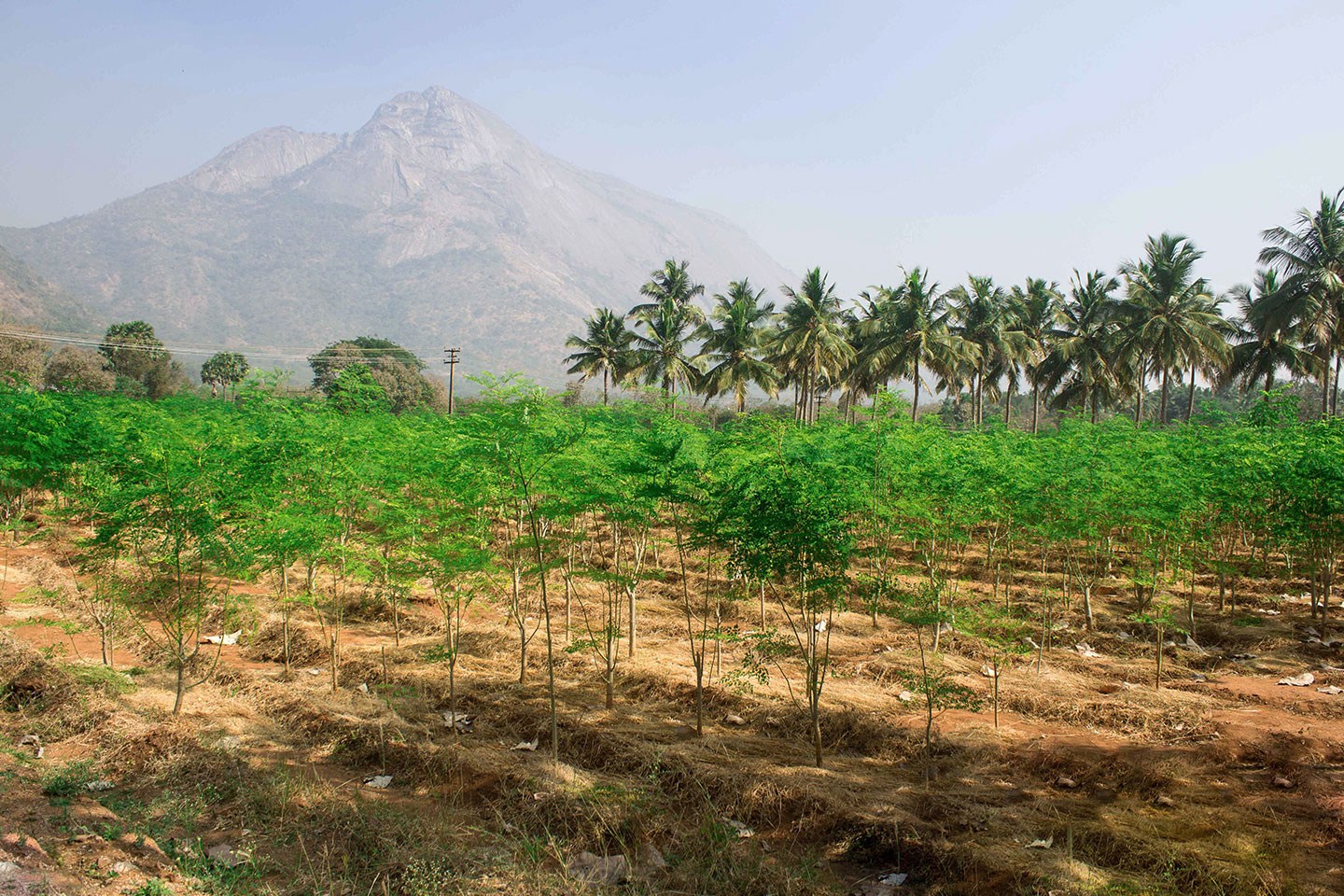Our First Monsoon
When we think of rains in India, we always seem to picture the monsoon season; starting in June and lasting through till September, the bulk of the subcontinent receives a much-awaited respite from sweltering summer when the south-westerlies hit and drench the arid paddy fields, rivers, lakes, and reservoirs. Coastal Tamil Nadu, however, gets its share of precipitation only when the monsoon winds “retreat” to bring rains in October/November.
While monsoons fail frequently (the last 50 years have seen failures 14 times), retreating monsoons fail even more often. The small farmer in Thoothukudi ploughs and prepares the land for planting in late August; hope is his paramount inspiration. He selects crops (tuvar dal or pigeon pea, chilly peppers, and moong dal being three among regional favorites) that will not require abundant water, and at the same time, can survive waterlogging as once the rains fall, the clayey, black soil stays flooded for weeks.
The 25 acres of young moringa at Ishka looked lush and verdant in August 2014. We had designed the farm to receive irrigation from groundwater as the rains were not our main source for watering. Three consecutive years before 2014 had, in fact, seen no significant rains in these villages. But a huge, unpleasant surprise was coming up. The rains were unusually heavy this year, and the flooding was so severe that all access roads/paths to the farm were underwater for several weeks. Moringa being an arid tree, couldn’t handle this much drenching, and most bushes did not survive.
Once the water receded, there was more bad news. The tinctoria roots still embedded underground grew rapidly, nourished by the abundant rainwater. Weeding them was a military scale operation we were not prepared for. The weed grew taller than the moringa by far, and soon we realized we were fighting a losing battle. Our staff who accessed the farm by motorcycle were forced to wade through knee-deep slush to reach work. Workers from the village just couldn’t keep up with the weeding schedules as well.
Also, we got schooled big time on pest management! Grasshoppers and other insects lay eggs that lie buried in the soil, waiting for the right time to hatch. Once the rain falls, the eggs hatch and in a matter of days, the area is teeming with grasshoppers and bugs that love feasting on moringa leaves!
Lesson learnt. Way forward, we decided to remove the tinctoria roots, this time using the services of a giant JCB excavator that can delve deep and thorough in getting out their roots once and hopefully forever. Also, we used extensive plastic mulching on the plant beds. To keep out smaller weeds without using chemical pesticides was a bigger issue. The pests have posed their share of challenges. Luckily, we found suppliers of chemical-free pesticides.
Also, and more valuable to us in the long run, the villagers taught us to prepare our own organic pesticides using locally available ingredients. They willingly shared with us age-old formulas that have been in their families for generations. This we find extremely precious and endearing. Both moringa and capers are quite pest resistant and don’t require special pest-control protocols. However, the regional brown grasshopper variety (the locals call it vettukili) loves chomping on caper bushes, and timely spraying with homemade organic pesticide is the only reason the bushes survive and thrive as they do now.

